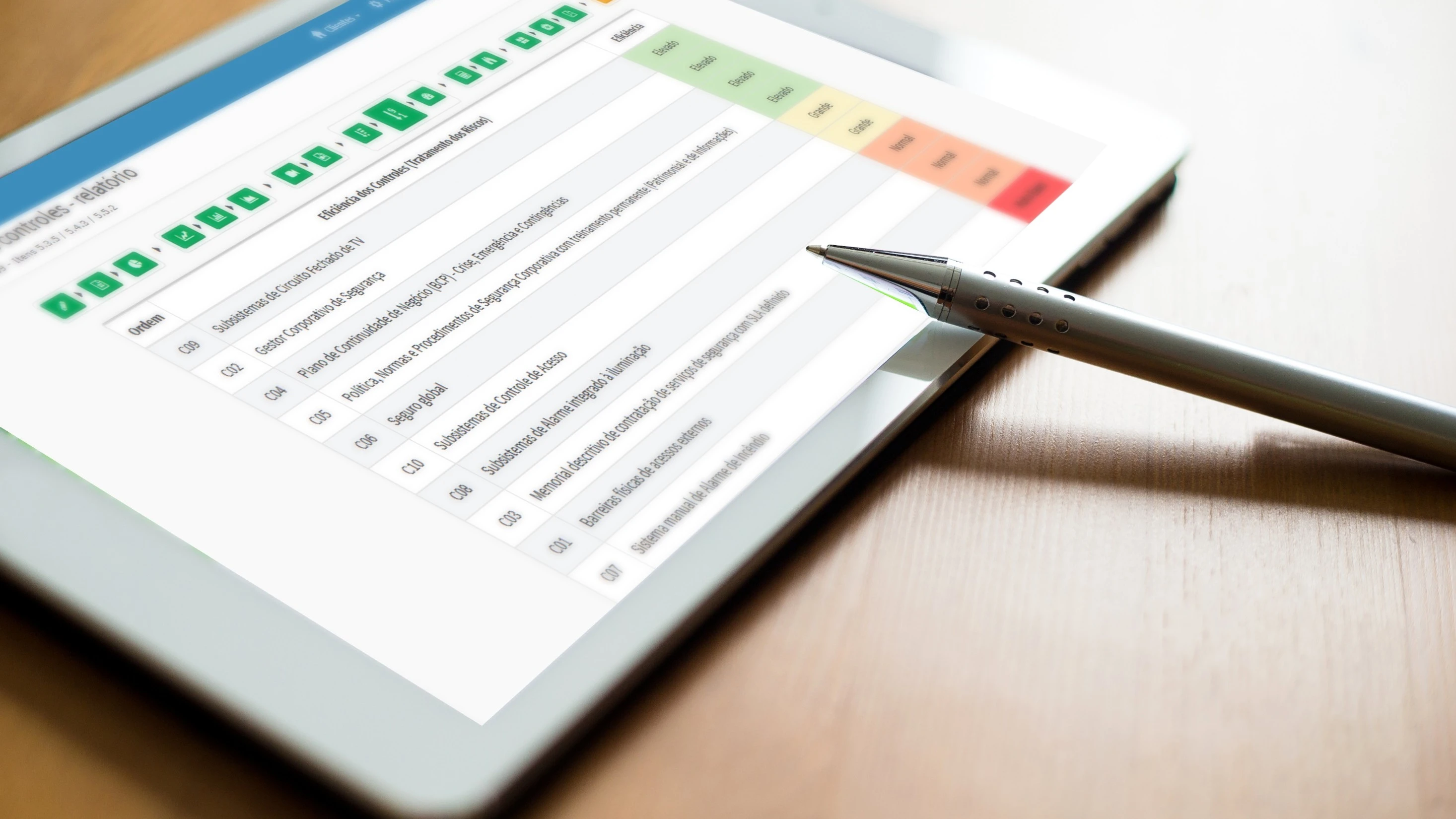
AEO - Authorized Economic Operator

About the t-Risk Platform
The t-Risk Platform is a SaaS solution available since 2015, developed to transform risk management in organizations. It combines technological innovation with the best global regulatory practices, especially the guidelines of ISO 31000 and ISO 31050 standards. Fully aligned with international standards, t-Risk offers an analytical and practical approach, supporting companies in all stages of corporate risk management: identification, analysis, evaluation, prioritization, and treatment. Available in Portuguese, Spanish, and English, the platform increases organizational productivity by up to 80%, delivering efficiency and accuracy.
Besides strengthening regulatory compliance and optimizing processes, t-Risk empowers its clients to transform challenges into opportunities by providing valuable information for strategic decision-making. Whether to reinforce organizational resilience or drive sustainable growth, t-Risk is an indispensable ally for facing an increasingly dynamic and complex risk landscape.
Discover how t-Risk can revolutionize risk management in your organization. Explore the power of our solutions and strengthen your strategy with a tool that goes beyond technology: a true partner in your journey towards transformation.

AEO Module 3.0
The new generation in risk and compliance management for Authorized Economic Operators.
The AEO 3.0 Module from t-Risk was developed to support companies in the certification journey and the maintenance of Authorized Economic Operator status, according to the new regulatory framework of the Brazilian Federal Revenue and the WCO – World Customs Organization. It integrates technology, governance and artificial intelligence, turning compliance into a sustainable competitive advantage.
More than compliance — intelligence, agility and trust across the supply chain.
What is the Brazilian AEO program?
The Authorized Economic Operator (AEO) is a program from the Brazilian Federal Revenue that recognizes reliable companies with strong internal controls, transparent processes and effective risk management across the international trade chain.
Based on World Customs Organization (WCO) guidelines and aligned with the SAFE Framework, the AEO Program seeks to harmonize customs procedures, raise security standards and strengthen cooperation between governments and companies.
Customs administrations in several countries follow the same guidance, promoting mutual recognition between nations and facilitating the international flow of goods with greater predictability and trust.
Being an AEO means being recognized as a strategic partner of the State, gaining priority, transparency and credibility in foreign trade operations.
Evolution of the AEO Program and new Regulatory Framework
IN RFB No. 2.154/2023 and Portaria Coana No. 164/2024 modernized the AEO Program, aligning it with the WCO SAFE Framework and international best practices. The main advances include:
OEA Conformity and Security certifications in a single framework.
Expansion to 22 evaluation criteria.
Inclusion of new stakeholders such as shipping agencies.
Digital and agile procedures through the AEO System.
Principles and objectives of the new AEO Program
The modernization strengthens cooperation between the private sector and customs administration, based on four pillars:
Facilitation and predictability in foreign trade operations.
Risk management as the central axis of certification.
Security of the global logistics chain.
Transparency and institutional integration.
Main Benefits of AEO Certification
Operational predictability and security.
Faster handling in interactions with the Federal Revenue Service.
International recognition through bilateral agreements.
Certified companies obtain:
Financial benefit related to costs and taxes.
Reduced inspections and priority clearance.
Improved reputation and competitive advantage in the global market.
Risk Management as the core of the New AEO
Portaria Coana No. 164/2024 makes customs and logistics risk management a mandatory eligibility criterion. The operator must demonstrate a structured process to identify, assess, treat and monitor risks, including:
Tax and customs compliance.
Physical security and cargo protection.
Human resources and sensitive positions.
Information security and commercial partner controls.

AEO Risk Management powered by the t-Risk Platform
t-Risk pioneered the digitization of logistics chain risk management in Brazil. In version 3.0, the AEO module incorporates the guidelines of IN RFB No. 2.154/2023 and Portaria Coana No. 164/2024, enabling companies to demonstrate, in real time, their compliance and maturity in risk and security management.
Automated mapping of risks and controls.
Calculation of inherent, residual risk and ROI.
Prioritization of corrective actions and action plans (5W2H).
Automated monitoring and reports for audit.
Process steps in the AEO Module 3.0
The module follows the ISO 31000 methodology, divided into five integrated steps. Each step is digitally recorded, ensuring transparency, traceability and governance.

Identification of risks.
Analysis of existing risks.
Risk assessment and classification.
Treatment with a structured action plan (5W2H).
Monitoring of controls and continuous improvement.
Innovations of the AEO Module 3.0 by t‑Risk
Features and differentiators incorporated in version 3.0 to support compliance, automation and evidence-based decision making.
-
Continuous monitoring
aligned with the criteria of Portaria Coana No. 164/2024.
-
Integration
with Background Check module for third-party risk management.
-
Smart reports
in PDF, configurable according to the Federal Revenue.

-
Vision Pro AI
to interpret evidence and recommend improvements.
-
Real-time dashboards
for tracking indicators and plans.
Convergence with ABNT and ISO Standards
The AEO Module 3.0 is compatible with the main international management and resilience standards. It is the complete solution for companies that want to obtain, renew or maintain their AEO certification with efficiency and intelligence.
ABNT NBR ISO 31000:2018 – Risk management guidelines.
ABNT NBR ISO 31010:2021 – Risk assessment techniques.
ABNT ISO/TS 31050:2025 – Emerging risks and resilience.
ABNT NBR ISO 22301 and 22361 – Business continuity and crisis management.
ABNT NBR ISO 31022:2020 – Legal risk management.